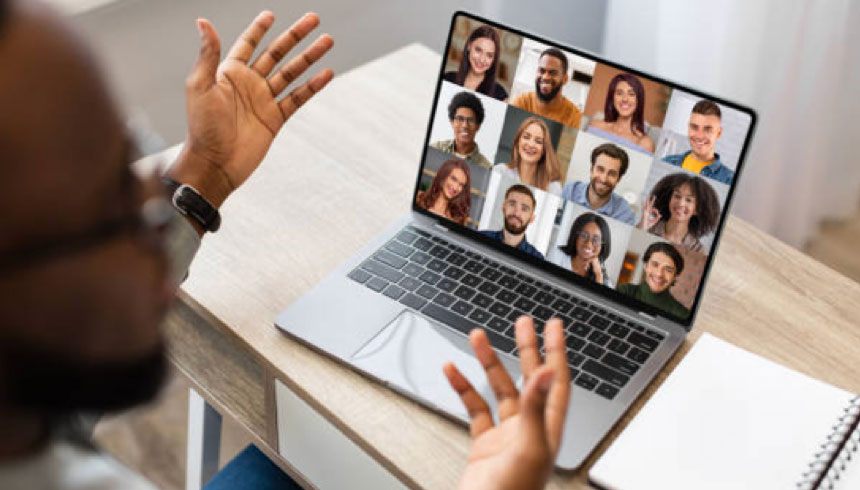Business leaders face frustration and uncertainty as they navigate a constantly evolving business landscape. The accelerated pace and increased complexity make traditional management approaches less relevant. As a result, leaders must continuously develop and learn new skills.
Those responsible for leader development, however, are subject to the same disruptive forces. In turbulent, uncertain times, detailed analysis or even established best practices are less effective. More often, the best option is to experiment, move toward what works and let go of what does not. In this light, this series of blog posts shares leadership development experiments that we’ve seen work well in today’s disruptive, fast-paced world.
Why Peer Learning Circles are a Critical Tool for Navigating the Disruptive Business Environment
No leader has all the necessary capabilities to succeed single-handedly in today’s complex business environment. So, how do leaders overcome their challenges? Where can they go to get support and guidance? Often, the answer is inside their own organization but is hidden. Peer learning circles are small, facilitated cohorts of diverse leaders within an organization, in which leaders learn from one another. PLCs work particularly well because:
- Participants support and hold each other accountable for development
- The process builds cross-enterprise networks that facilitate collaboration and increase individual resilience and well-being.
- Participants feel heard and recognize that everyone is struggling with similar issues
- The learning addresses real-world challenges and opportunities that participants bring to the group
- The structured, peer coaching process develops empathy, deep listening, and reframing to find new paths forward
- Participants learn about what works best in within their own organization
Peer Learning Circle Process
The number of leaders in a PLC cohort ranges from 5 – 12 with the specific group size depending on seniority. While leaders in a cohort are typically at the same level, PLC membership is designed to be as diverse as possible. Ideally, each PLC cohort includes people from different functions, sites, and backgrounds.
PLC cohorts meet virtually 6 times (either once every 2 weeks for 3 months or once a month for 6 months). Each meeting focuses on a different pre-determined topic. Topics can be grouped around a common theme, such as Agile transformation, Leader as Coach, etc. or focused on a particular population, such as new managers, top talent, executives, or people of color. Sometimes, we give the PLC multiple options and let them select the specific topics that most benefit to them. Providing this autonomy ensures relevance and builds motivation.
Each of the six facilitated PLC sessions are 90 minutes and broken into 3 parts. In the first part, which is ~15 min., participants reconnect and are prompted to share their answer to a question related to the PLC session topic. For example, if the PLC session is focused on giving feedback, the prompt might be “What the best piece feedback you recently received?” or “What’s a difficult piece of feedback you need to deliver?”
In the second part of the PLC session, which is ~30 min., participants discuss the assigned prework. The prework is a brief (less than 30 min.) sophisticated and fresh article, podcast, video, or tool related to the session topic. During this time, participants share their key takeaways, questions, alternative views, and thoughts on how they might apply the learning in their day-to-day work.
Finally, in the third part of the PLC session, one participant volunteers a challenge or opportunity that they are struggling with, and the remaining participants use a structured process to coach the volunteer. This involves developing new insight into the issue, reframing it from different perspectives, and committing to a few specific actions. In the subsequent, PLC session, whoever volunteered reports back on what’s happened.
The Role and Value of a Facilitator
Within a PLC, the facilitator plays a vital role. The facilitator’s job is not to teach, however, but to establish an environment in which participants are comfortable learning from each other. This entails four key responsibilities. The first, and most important, is building psychological safety among the group. The second entails encouraging dialogue and equal participation. The third entails using a peer coaching model to help participants ask powerful questions, reframe challenges as opportunities, and make commitments. Finally, the facilitator is responsible for PLC logistics, such as scheduling and distribution of pre-work.
Peer Leadership Circles Outcomes
We’ve found that PLCs work for a wide variety of development purposes across industries. In a recent example, we ran PLCs for 150 high-potential directors at a Fortune 100 technology company. Ninety three percent of participants reported that the PLCs extended their impact as a leader and a network analysis showed that the PLCs increased cross-business unit collaboration among the cohort by ~500%. According to one director, “It was a wonderful experience that showed me that regardless of title, we all go through similar problems. Getting to see a glimpse into how each of my peers handles those problems has been a huge learning moment for me.”
In Conclusion
Peer leadership circles make a great leadership development experiment because they are not only impactful, but highly scalable. You can start with a single PLC, see how it goes, and grow from there. Jennifer Paylor, who built the world’s largest internal coaching practice at IBM and is an expert in the peer learning approach, found that 20% of PLC participants expressed interest in subsequently leading their own PLC. This multiplication effect allowed her to use peer leadership circles for the development of thousands of associates on a global scale. According to Jennifer, “Peer leadership circles are how modern companies easily scale and embed great leadership to organically grow the bottom line and accelerate organizational capabilities that positively impact people and customers.”

